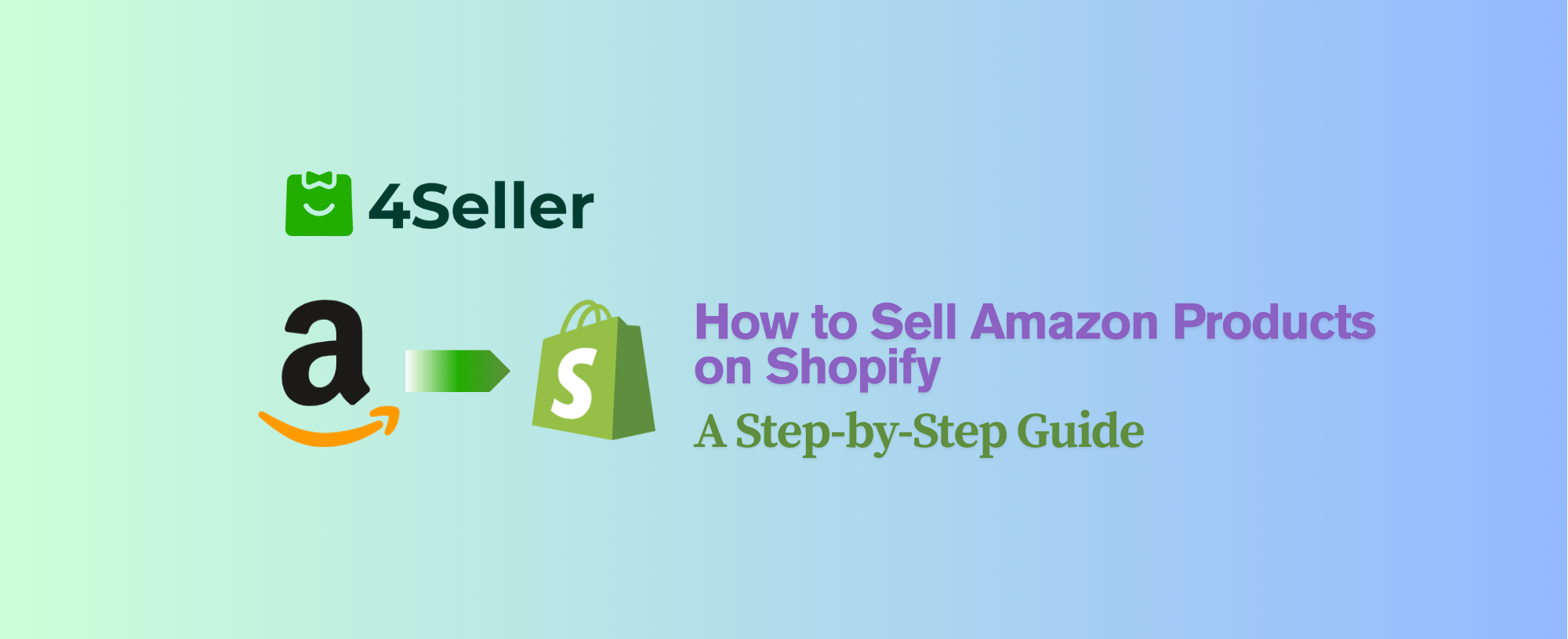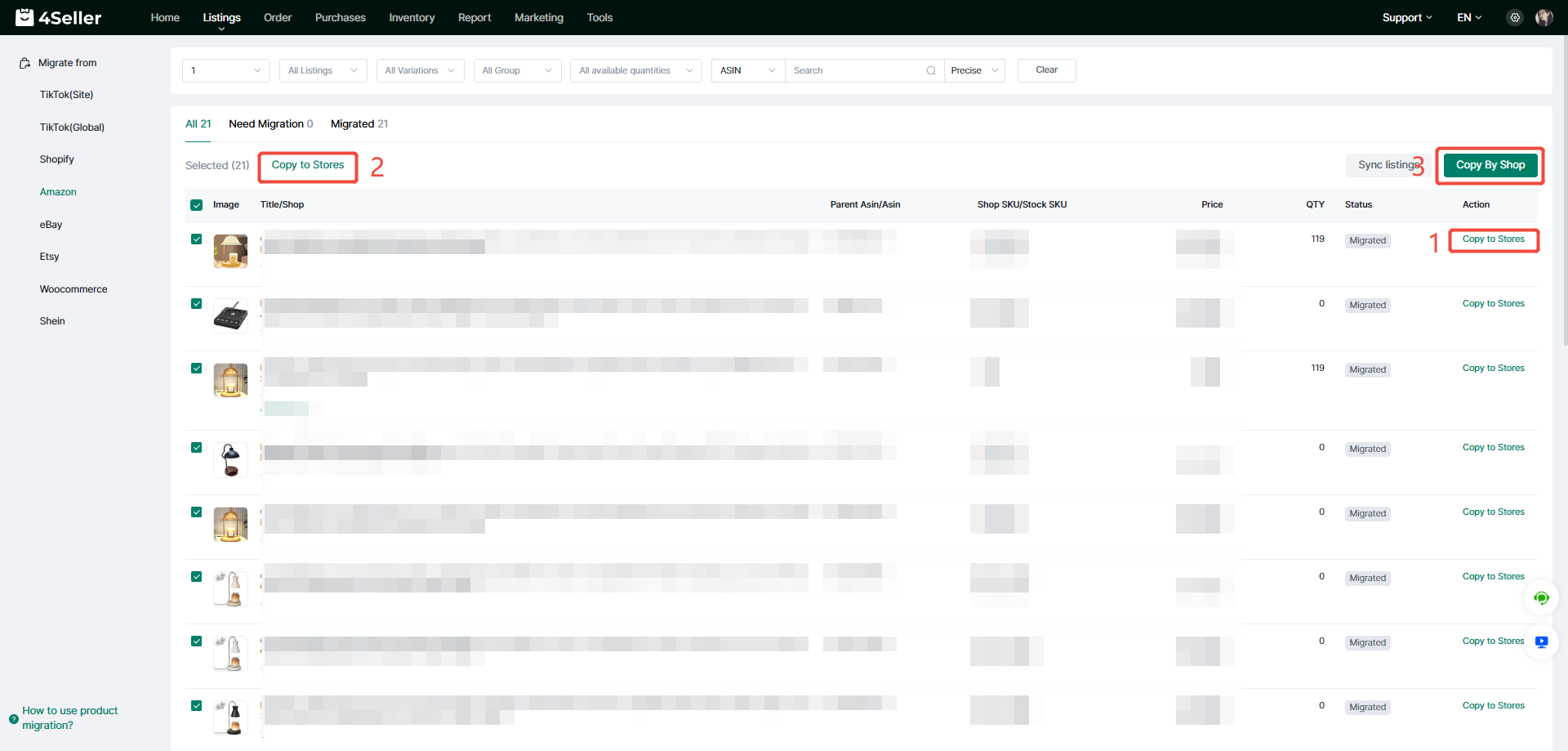Popular Posts
- Order Management
- TikTok Shop
- Temu
- About 4Seller
- Amazon
- Shopify
- Inventory Management
- Amazon MCF&FBA
- Amazon Shipping
- UPS
- FedEx
- DHL Express
- Listing Management
- Creator Bulk Invite
- GLS
- Seller Tips
- eBay
- Shein
- Marketplace News
- Royal Mail
- Amazon MCF
- Walmart
- Multi-channel Store
- Logistics Rule
- Shipping Integration
- Stripe Tracking Sync
- Poste Italiane
- UniUni
- USPS
- PayPal Tracking Sync
- OTTO
- Walmart WFS
- Yodel
- Kaufland
- BRT
- CaiNiao
- Chronopost
- CIRRO
- Correos
- Correos Express
- Deutsche Post
- DHL Parcel
- Etsy
- Evri
- GOFO
- Inventory Sync
- Beginner Tutorial
- DPD
- Shipping Label
- DHL
- FBM
- Platform Integration
- AliExpress
- 3PL
- Cdiscount
- OMS
- WooCommerce
How to Sell Amazon Products on Shopify:A Step-by-Step Guide
 By Amelia20 May,2025
By Amelia20 May,2025
Selling on Amazon can be a great way to reach a large customer base, but it's not the only option for e-commerce success. By expanding your sales channels to include a Shopify store, you can increase your brand's visibility, build customer loyalty, and boost your overall revenue. In this blog post, we'll walk you through the steps of selling your Amazon products on your Shopify store, with the help of 4Seller ERP, a powerful tool that can streamline your operations and make multi-channel selling a breeze.
1. Why Sell on Shopify and Amazon?
Before we dive into the how-to, let's briefly discuss why selling on both Shopify and Amazon can be beneficial for your business. Amazon is a global e-commerce giant with a massive customer base, offering excellent product discoverability and trust. However, it comes with limitations, such as limited control over the customer experience and heavy competition.
Shopify, on the other hand, allows you to create a branded, customized online store where you have full control over the look, feel, and functionality. By combining the two platforms, you can leverage Amazon's reach and Shopify's flexibility to maximize your sales potential.
2. What needs to be prepared?
Before you start selling your Amazon products on Shopify, you'll need to have the following in place:
An Amazon Seller Account: You should already be selling products on Amazon and have an active seller account.
A Shopify Store: Set up a Shopify store if you haven't already. Shopify offers a user-friendly interface and various themes to help you create an attractive online store.
4Seller ERP: Sign up for 4Seller ERP, which is designed to integrate seamlessly with both Amazon and Shopify, simplifying your inventory management, order fulfillment, and more.
3. Steps to Sell Amazon Products on Shopify
3. 1. Connect Your Amazon and Shopify Accounts to 4Seller ERP
The first step is to integrate your Amazon and Shopify accounts with 4Seller ERP. This process is straightforward. Log in to your 4Seller ERP account and follow the prompts to connect your Amazon account and your Shopify store. Once connected, 4Seller ERP will start syncing data between the two platforms, ensuring that your product information, inventory levels, and order details are always up-to-date.
3. 2. Sync Your Product Listings
4Seller ERP can help you quickly import your Amazon product listings into your Shopify store. It automatically fetches product details such as titles, descriptions, images, and pricing. You can review and edit these details in 4Seller to match your style and preferences. For example, you might want to add more detailed product descriptions or use different images that better showcase your products on your Shopify store.
3.2.1.Copy to Stores: choose the products you want to move and click the button to quickly move your Amazon items to your shopify store.
3.2.2.Copy to Stores: Select different items for batch moving to save you time and quickly improve efficiency
3.2.3.Copy By Shop:Supports synchronizing all products from your shopify store to your Amazon store, and also allows you to filter based on the same products, so you don't have to worry about product duplication.
3. 3. Manage Inventory Effectively
One of the key advantages of using 4Seller ERP is its inventory management capabilities. With real-time inventory sync, when a product sells on Shopify, the inventory level in your Amazon store will be automatically adjusted, and vice versa. This helps prevent overselling and ensures that you always see accurate stock availability. 4Seller ERP also allows you to set up inventory alerts, so you know when it's time to restock your products.
3. 4. Fulfill Orders Seamlessly
When an order comes in through your Shopify store, 4Seller ERP can help you manage the fulfillment process efficiently. If you use Amazon FBA (Fulfillment by Amazon), 4Seller ERP can communicate with Amazon to fulfill the Shopify order using your Amazon inventory. This means you can provide fast and reliable shipping to your Shopify customers, leveraging Amazon's extensive logistics network. If you fulfill orders yourself, 4Seller ERP streamlines the process by providing tools for printing shipping labels, tracking orders, and handling returns.
3. 5. Analyze and Optimize
4Seller ERP provides valuable insights and analytics. You can track your sales performance across both Amazon and Shopify, see which products are selling well, and identify trends. Use this data to optimize your product listings, pricing, and marketing strategies. For example, if you notice that a particular product is selling better on Shopify with a certain price or promotion, you can replicate that success on Amazon or vice versa.
4. Conclusion
Selling your Amazon products on your Shopify store, with the assistance of 4Seller ERP, is a smart way to expand your e-commerce business. By following these steps, you can effectively manage your inventory, fulfill orders, and analyze your performance across multiple channels. This not only increases your sales potential but also gives you greater control over your brand and customer experience. So, start exploring the possibilities of multi-channel selling today and take your e-commerce business to the next level!
All Topics
- Order Management
- TikTok Shop
- Temu
- About 4Seller
- Amazon
- Shopify
- Inventory Management
- Amazon MCF&FBA
- Amazon Shipping
- UPS
- FedEx
- DHL Express
- Listing Management
- Creator Bulk Invite
- GLS
- Seller Tips
- eBay
- Shein
- Marketplace News
- Royal Mail
- Amazon MCF
- Walmart
- Multi-channel Store
- Logistics Rule
- Shipping Integration
- Stripe Tracking Sync
- Poste Italiane
- UniUni
- USPS
- PayPal Tracking Sync
- OTTO
- Walmart WFS
- Yodel
- Kaufland
- BRT
- CaiNiao
- Chronopost
- CIRRO
- Correos
- Correos Express
- Deutsche Post
- DHL Parcel
- Etsy
- Evri
- GOFO
- Inventory Sync
- Beginner Tutorial
- DPD
- Shipping Label
- DHL
- FBM
- Platform Integration
- AliExpress
- 3PL
- Cdiscount
- OMS
- WooCommerce
Popular Posts
- 17 Dec,2024
Popular Posts
- 17 Dec,2024
Back to top





